 Facebook
Facebook
 X
X
 Instagram
Instagram
 TikTok
TikTok
 Youtube
Youtube
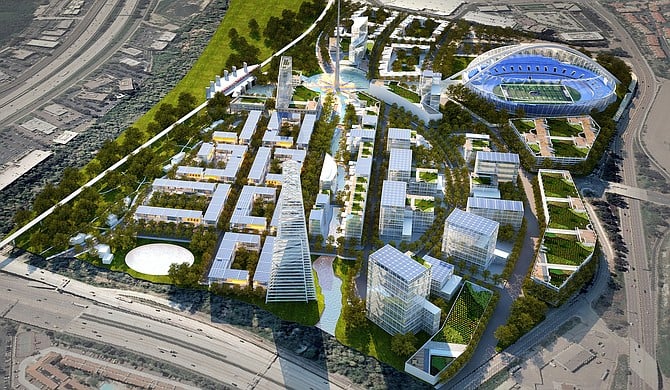
As the battle for the presidency of the newly reconstituted San Diego City Council heads for a showdown, the contest is increasingly shaping up as a way for Mission Valley development interests to strengthen their grip on the fate of Qualcomm Stadium, likely soon to be vacated by the Chargers.
Such is the word around the city hall and its political environs in light of the battle between Democrats David Alvarez and Myrtle Cole over the powerful leverage that the council presidency can bring — and the big money given to Cole during the last face-off over the stadium real estate, in which Mission Valley developers hoped to both hang on to the Chargers and build a lucrative new office and residential complex for themselves.
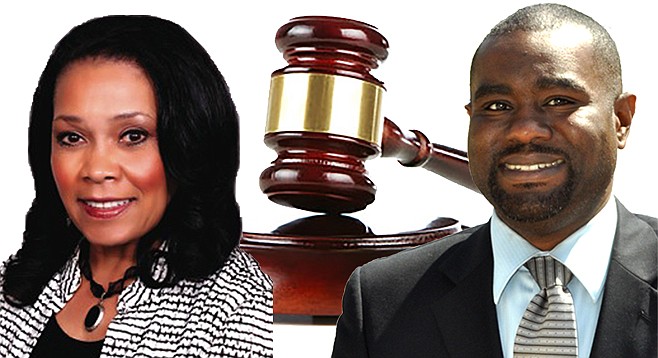
Fourth District councilwoman Cole's stake in the deal involved her legal defense fund, set up to defray expenses left over from a court battle with fellow Democrat Dwayne Crenshaw, who alleged that a Cole hit-piece had defamed him during their 2013 electoral showdown.
The case was thrown out of court in 2014, but not before Cole had run up $42,159 worth of unpaid legal expenses.
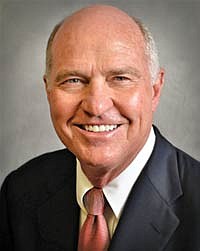
Rather than cover the cost herself, Cole set up a political committee to raise cash from a corps of city-hall lobbyists and related special interests, most notably Tom Sudberry, whose Sudberry Properties is developer of the giant Civita complex off Friars Road, just down the street from Qualcomm Stadium.
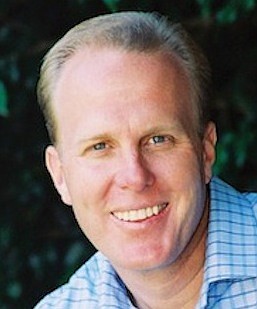
Led by Republican councilman Scott Sherman and mayor Kevin Faulconer, the city council last year authorized spending of $2.1 million on a hurry-up environmental impact report for the stadium-cum-development project, although the Chargers-owning Spanos family loudly opposed the site and said that the council's action would not dissuade them from leaving town.
"I own two L.T. jerseys," Cole said before voting yes on the expenditure, alluding to ex-Chargers star LaDainian Tomlinson.
"That's an investment and I want to wear those jerseys."
The same plan, calling for at least $350 million in tax funding from the city and county, is currently being touted by some football backers as a last-ditch way to keep the Chargers in town in the wake of voters' rejection of November's downtown stadium scheme, though the team has yet to express any interest in pursuing the previously spurned Mission Valley proposal.
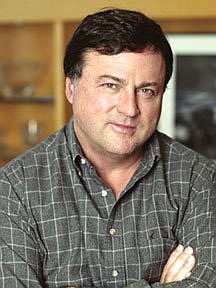
Should the team depart for Los Angeles, the environmental advance work could be used to build the massive commercial portion of the complex, over the efforts of ex-Padres owner John Moores and his JMI development company.
Moores has been seeking to build his own development on the city-owned propertyin concert with San Diego State University, which would likely preclude the plan promoted by Sherman and Faulconer.
"The JMI team (represented by President John Kratzer and Steve Peace), working in concert with Steve Black of Cisterra Development, another prominent San Diego developer (and SDSU alumni), will unveil their proposal to develop the Qualcomm Stadium site into a civic gem that all SDSU alumni and San Diego County residents will claim proudly," said an invitation to a dog-and-pony show at the university this past March.
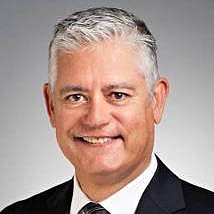
In the weeks leading to the July 14, 2015, vote on the $2.1 million environmental report pushed by the mayor, Cole's legal defense fund collected money from a host of perennial city hall players, many financial supporters of Republican Faulconer, including SeaWorld president John T. Reilly, with $550 on May 1, and Sempra's Frank Urtasun, who donated $250 on April 23.
Another major Faulconer backer, Republican Tom Sudberry, also weighed in, giving $550 on April 28. The same day, Jane Sudberry contributed $550. The Sudberry firm’s Estean H. Lenyoun, III, gave $125 on April 23, along with the same from Karen Lenyoun.
Doug Austin, an architect frequently used by Republican U-T ex–publisher Doug Manchester, gave Democrat Cole's fund $300. Austin was appointed to the planning commission in April 2014 by Faulconer in what critics characterized as payback for Manchester’s support of the mayor's 2014 special election bid.

Cole's opponent for the council presidency is the eighth district's David Alvarez, who voted against funding the Mission Valley stadium environmental impact report, noting that “without a financing plan for this project, we are simply not being serious.”
Alvarez's fellow Democrats Todd Gloria and Marti Emerald joined him in opposing the expenditure. Council Republicans and Cole carried the day, and the money was spent.
But the Mission Valley developers could yet have a chance of prevailing in some form, even if Alvarez obtains the council presidency. As noted by the Union-Tribune, Alvarez has "formed strong relationships with some of the council's Republicans, particularly Scott Sherman."


As the battle for the presidency of the newly reconstituted San Diego City Council heads for a showdown, the contest is increasingly shaping up as a way for Mission Valley development interests to strengthen their grip on the fate of Qualcomm Stadium, likely soon to be vacated by the Chargers.
Such is the word around the city hall and its political environs in light of the battle between Democrats David Alvarez and Myrtle Cole over the powerful leverage that the council presidency can bring — and the big money given to Cole during the last face-off over the stadium real estate, in which Mission Valley developers hoped to both hang on to the Chargers and build a lucrative new office and residential complex for themselves.

Fourth District councilwoman Cole's stake in the deal involved her legal defense fund, set up to defray expenses left over from a court battle with fellow Democrat Dwayne Crenshaw, who alleged that a Cole hit-piece had defamed him during their 2013 electoral showdown.
The case was thrown out of court in 2014, but not before Cole had run up $42,159 worth of unpaid legal expenses.

Rather than cover the cost herself, Cole set up a political committee to raise cash from a corps of city-hall lobbyists and related special interests, most notably Tom Sudberry, whose Sudberry Properties is developer of the giant Civita complex off Friars Road, just down the street from Qualcomm Stadium.

Led by Republican councilman Scott Sherman and mayor Kevin Faulconer, the city council last year authorized spending of $2.1 million on a hurry-up environmental impact report for the stadium-cum-development project, although the Chargers-owning Spanos family loudly opposed the site and said that the council's action would not dissuade them from leaving town.
"I own two L.T. jerseys," Cole said before voting yes on the expenditure, alluding to ex-Chargers star LaDainian Tomlinson.
"That's an investment and I want to wear those jerseys."
The same plan, calling for at least $350 million in tax funding from the city and county, is currently being touted by some football backers as a last-ditch way to keep the Chargers in town in the wake of voters' rejection of November's downtown stadium scheme, though the team has yet to express any interest in pursuing the previously spurned Mission Valley proposal.

Should the team depart for Los Angeles, the environmental advance work could be used to build the massive commercial portion of the complex, over the efforts of ex-Padres owner John Moores and his JMI development company.
Moores has been seeking to build his own development on the city-owned propertyin concert with San Diego State University, which would likely preclude the plan promoted by Sherman and Faulconer.
"The JMI team (represented by President John Kratzer and Steve Peace), working in concert with Steve Black of Cisterra Development, another prominent San Diego developer (and SDSU alumni), will unveil their proposal to develop the Qualcomm Stadium site into a civic gem that all SDSU alumni and San Diego County residents will claim proudly," said an invitation to a dog-and-pony show at the university this past March.

In the weeks leading to the July 14, 2015, vote on the $2.1 million environmental report pushed by the mayor, Cole's legal defense fund collected money from a host of perennial city hall players, many financial supporters of Republican Faulconer, including SeaWorld president John T. Reilly, with $550 on May 1, and Sempra's Frank Urtasun, who donated $250 on April 23.
Another major Faulconer backer, Republican Tom Sudberry, also weighed in, giving $550 on April 28. The same day, Jane Sudberry contributed $550. The Sudberry firm’s Estean H. Lenyoun, III, gave $125 on April 23, along with the same from Karen Lenyoun.
Doug Austin, an architect frequently used by Republican U-T ex–publisher Doug Manchester, gave Democrat Cole's fund $300. Austin was appointed to the planning commission in April 2014 by Faulconer in what critics characterized as payback for Manchester’s support of the mayor's 2014 special election bid.

Cole's opponent for the council presidency is the eighth district's David Alvarez, who voted against funding the Mission Valley stadium environmental impact report, noting that “without a financing plan for this project, we are simply not being serious.”
Alvarez's fellow Democrats Todd Gloria and Marti Emerald joined him in opposing the expenditure. Council Republicans and Cole carried the day, and the money was spent.
But the Mission Valley developers could yet have a chance of prevailing in some form, even if Alvarez obtains the council presidency. As noted by the Union-Tribune, Alvarez has "formed strong relationships with some of the council's Republicans, particularly Scott Sherman."
Comments